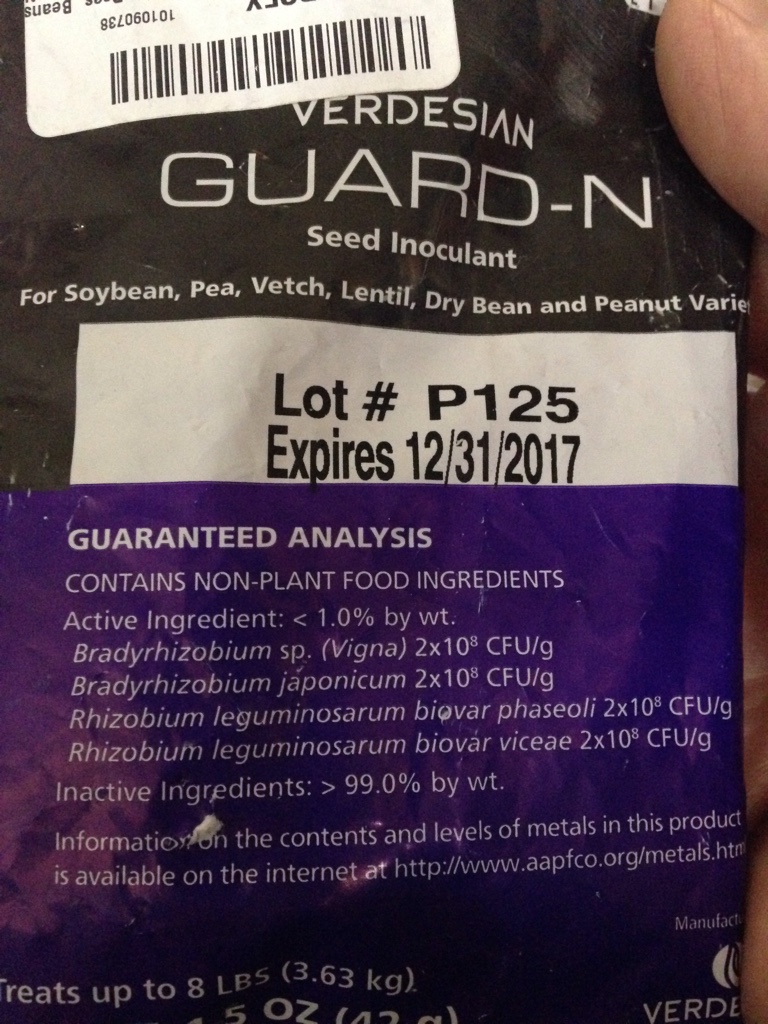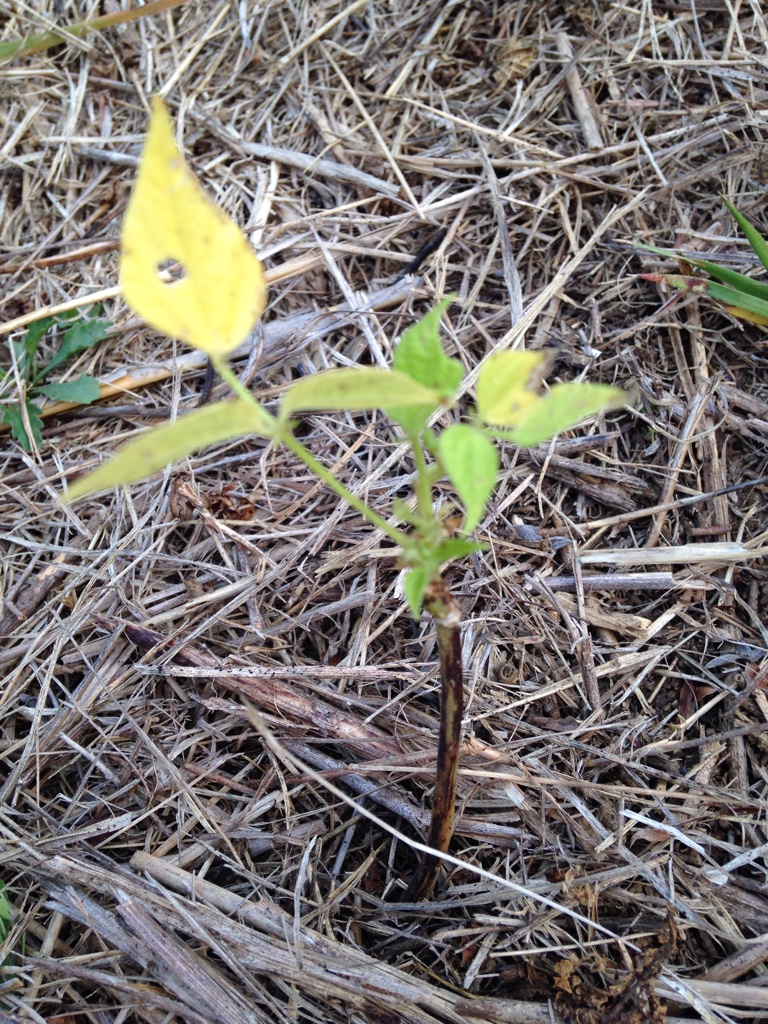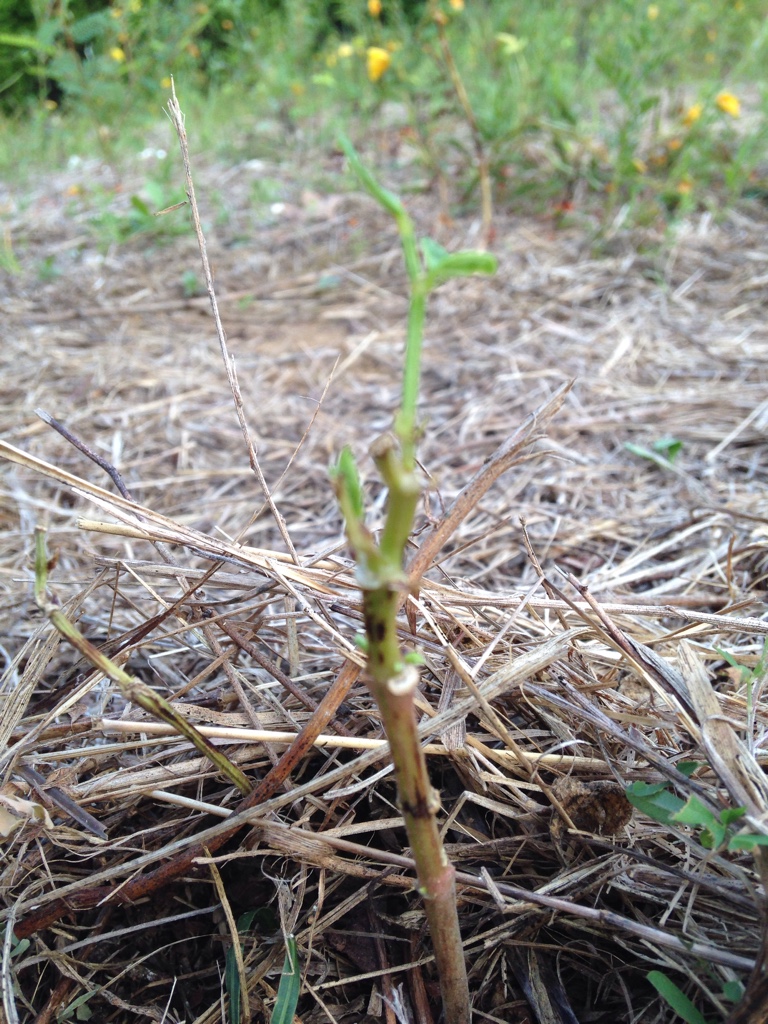This came yesterday:
What I'm hoping to find out is if the right inoculant will help beans fix or manufacture enough nitrogen from the air to prevent the yellowing. Also, one of my goals is to see if I can grow healthy bean plants on this poor soil, without using synthetic fertilizer.
Just a few weeks ago, these plants were so yellow that I didn't think they would survive.
They were actually worse than this at one point, but I didn't take a picture.
Just to see what would happen, I did a foliar application of a weak solution of Redmond Mineral Salt. I know this sounds crazy, but a few days later I checked on the beans, and they looked better. They were starting to green back up. Then, a few days later, deer found them and ate all the tops out of them. I thought that was the end of them. There was nothing left but brown stems sticking up out of the ground. But then, a couple of days ago, I checked them again and they are sprouting new leaves.
It's almost like they're miniature Mineral Stumps.
Who knew that a $1 bag of beans from the Dollar General store could be so entertaining?
Here's a video of a talk given by a farmer from North Dakota named Gabe Brown. One of the things he talks about is getting away from synthetic fertilizers by using diverse multi-species cover crops that gradually regenerate the soil. This kind of stuff fascinates me, and videos like this gave me the idea to do this silly little experiment, which, literally, doesn't amount to a hill of beans.
Sent from my iPhone using
Deer Hunter Forum







